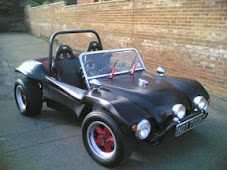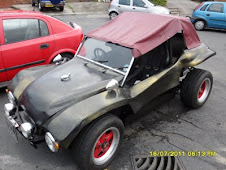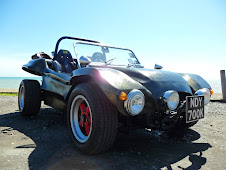8th March 1007
My engine had been coughing spluttering and backfiring for several months and my attempts to solve this by corroboration had not come to much fruitfulness.
I decided that as my cylinders #3/#4 were making a larger than normal tapping sound and it was also noticeable that the exhaust from these cylinders was considerably colder than cylinders #1/#2 that I should tune up my valves
The procedure for a valve tune-up is fairly simple as long as you have the area clean , the correct tools a feeler gauge; 13mm spanner; 19mm spanner and a large screwdriver and a smaller screwdriver.
Before starting I remembered to purchase some new cork gaskets for the valve covers and put my ground sheet down under the cylinders #1 and #2 . The first cylinder is easy to find as you can remove the top from the distributor and crank the generator nut with a 19mm spanner until the rotor arm points to the line on the perimeter of the distributor body. With this set the feeler gauge can be used to check or set the valve clearances for cylinder #1. I used the .008" and .006" blades from the feeler gauge to check that the adjustment between the rocker arm and the top of the valve stem was .006". By trapping the 0.06" blade between the adjuster and the stem and doing the adjuster up until you can just slide the .006" blade in and out with friction. It is possible to then do up the lock nut and check you have the correct setting by trying to insert the .008" blade. If this is successful and the .008" blade fits you have the wrong setting and must go back and try again with the 0.006" blade. This has to be repeated for the inlet valve and the exhaust valve.
The whole engine has to be moved backwards by 180 degrees so that cylinder #2 is in firing position. This can be accomplished by using the 19mm spanner to rotate the generator anti clockwise so that the large pulley on the crankshaft travels 180". Once done the valves for cylinder #2 can be set in the same manor as cylinder #1.
At this stage two cylinders have been adjusted and #3/#4 remain. You can keep rotating the engine by 180 degrees a further two times adjusting the valves on #3 and then #4.
Once completed you can replace the valve covers with the new gaskets that you have purchased earlier.
I started up my engine and was happy to see an improvement , however before long there was a slight metallic sound coming from #3/#4. I shut the engine off immediately.
I presumed something had come loose...
I had to wait another 24 hrs to let the engine cool down and could not get back to remove the valve cover until the following morning. Once I had the valve cover removed it was clear what had happened. I had encountered some problems getting the valve cover on #3/#4 and had inadvertently knocked the retaining pin off the rocker assembly. I found the pin and three washers complete in the bottom of the cylinder head. Replacing them was fairly simple and the pin was a tight fit. I carefully replaced the valve cover after cleaning up the gasket and restarted the engine.
The engine fired up beautifully it sounded like it was running much better and producing more horsepower. I reved the engine and found a nice rich sound of power. I jumped in and backed the car out of the garage and put the buggy into first gear and pulled away. The engine started to pop and splutter and sounded like it was running unevenly.
This was very odd. I could run the engine stationary perfectly but could not drive the car without it spluttering and making awful noises.
I would have to have a rethink ...
Subscribe to:
Post Comments (Atom)






















No comments:
Post a Comment